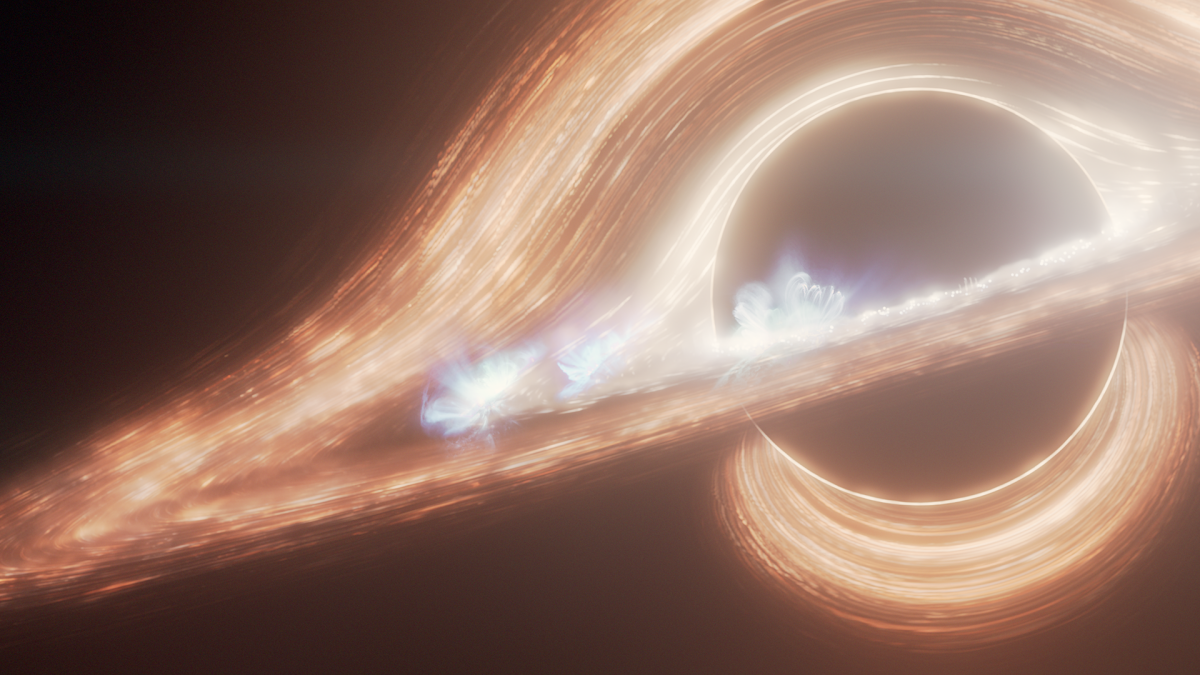
Scientists have discovered that the supermassive black hole at the center of the Milky Way buzzes with activity, shooting out a nonstop stream of flares into space.
A new study using NASA‘s James Webb Space Telescope has revealed a variety of light coming from the black hole Sagittarius A* — or rather its accretion disk, the ring of rapidly spinning material that surrounds it.
While some flares are reminiscent of the ephemeral flickers of a candle, lasting just seconds, others are gigantic eruptions, blasting out a half-dozen incredibly bright jets on a daily basis.
These new findings, published in The Astrophysical Journal Letters this week, could help astrophysicists better understand black holes and how they interact with the gas and dust around them. They also may provide new insight into the evolution of the Milky Way.
“We saw constantly changing, bubbling brightness,” said Farhad Yusef-Zadeh, the Northwestern University astronomer who led the study, in a statement. “And then boom! A big burst of brightness suddenly popped up. Then, it calmed down again. We couldn’t find a pattern in this activity. It appears to be random.”
He found a Milky Way black hole 50 years ago, and finally got to see it

The first image of Sagittarius A*, the black hole at the center of the Milky Way galaxy, released to the public in May 2022.
Credit: Event Horizon Telescope Collaboration
Scientists at the Space Telescope Science Institute in Baltimore, which runs Webb and the Hubble Space Telescope, are calling this the longest, most-detailed research of Sagittarius A*, pronounced “A-star,” to date. The study is based on 48 hours of observation time in eight to 10-hour durations over the course of a year.
Mashable Light Speed
Black holes were little more than a theory 50 years ago — a kooky mathematical solution to a physics problem — and even astronomers at the top of their field weren’t entirely convinced they existed.
Today, not only are supermassive black holes accepted science, they’re getting their pictures taken by a collection of enormous, synced-up radio dishes on Earth. Supermassive black holes, millions to billions of times more massive than the sun, are thought to lurk at the center of virtually all large galaxies.
What we know is this: Falling into a black hole is certain death. Any cosmic stuff that wanders too close reaches a point of no return. But scientists have observed something weird at the edge of black holes’ accretion disks, similar to the swirl of water around a bathtub drain. A tiny amount of that stuff can suddenly get rerouted. When that happens, high-energy particles can get flung outward as a pair of jets, blasting in opposite directions, though astronomers haven’t quite figured out how they work.
The video above shows some of the Webb telescope data from April 7, 2024, covering 9.5 hours of observation, with a big flare appearing toward the end.
Yusef-Zadeh and team are trying to help get to the bottom of that. They’ve likened the new observations to solar flares, but capable of shining across 26,000 light-years of space. Webb saw brightness changes over short timescales, meaning they are coming from the black hole’s inner disk, not far outside its so-called event horizon, that previously mentioned point of no return.
Yusef-Zadeh speculates the biggest and brightest flares are like magnetic reconnection events, a process in which two magnetic fields crash and release accelerated particles, traveling near the speed of light. The shortest bursts may derive from minor disturbances in the accretion disk, similar to solar flares which occur when the sun’s magnetic field jumbles, compresses, and erupts.
“Of course, the processes are more dramatic because the environment around a black hole is much more energetic and much more extreme,” he said. “But the Sun’s surface also bubbles with activity.”
The next step will be to observe Sagittarius A* for a longer, uninterrupted period of time to see if the flares repeat or are indeed random.






